The Khmer Empire
The Khmer Empire was a powerful Kingdom in South-East Asia. Its major architectural works (temples and sculptures) are located in present day Cambodia, where the capital of the empire was located. However, during long periods of time the Khmer ruled over parts of present day Thailand, Laos and Vietnam.
Like other major ethnic groups in the history of South-East Asia (the Thais, the Mons, The Chams) the Khmer are thought to have descended in the prehistoric period from the river valleys in Eastern Tibet and Southwest China. The Khmer appear first on the scene (in Chinese records) in the second half of the 6th century A.D. with the Kingdom known as Chenla.
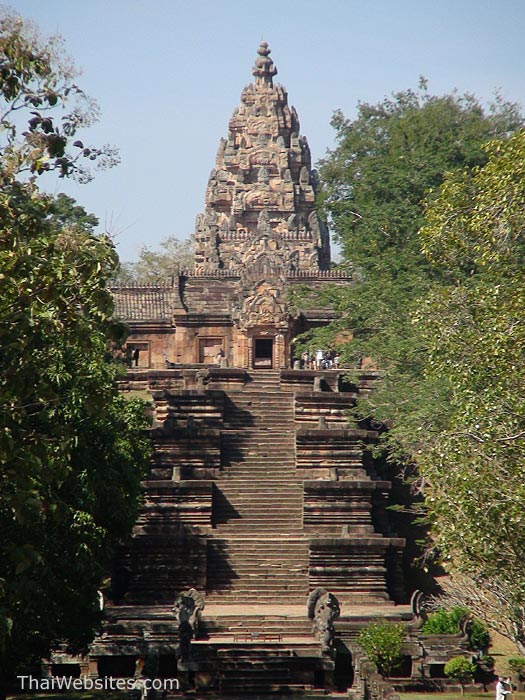
Ascent to Phanom Rung (Buriram Province). Phanom Rung was built on between the 10th and 13th century A.D., but mostly during the reign of King Suriyavarman II (1113-1150 A.D.)
The Angkor era became the central area of settlement from the early 9th century up to the demise of the Khmer Empire in the early 15th century. The Empire itself had its ups and downs, and remained a single authoritarian state for only limited time periods, when strong military leaders where on the throne. Important leaders contributed by building new temple complexes in the Angkor area. Angkor Wat was constructed in the early 12th century under Suryavarman II. Jayavarman VII, considered to be the last great leader of the Khmer, built his new capital at Angkor Thom.
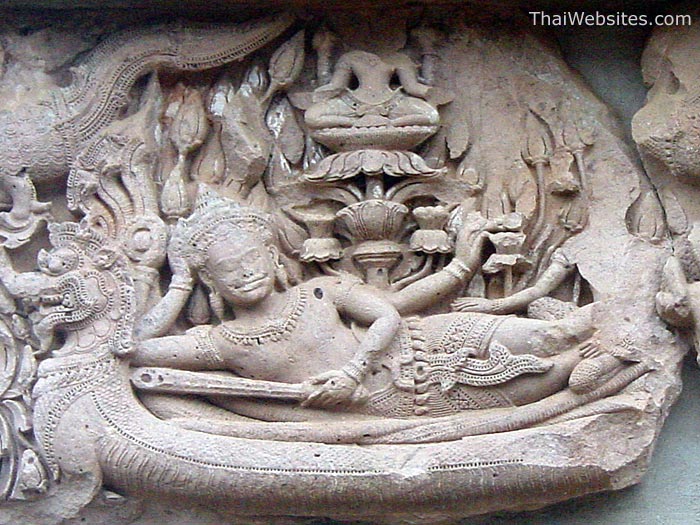
Famous Vishnu Anantasayin lintel at Phanom Rung
During the reign of Suryavarman II the Khmer Empire incorporated most of present day Thailand. The Mon Kingdom of Haripunchai in Northern Thailand (Lamphun) was conquered. After the death of King Suryavarman II the Khmer Empire was somewhat in disarray and suffered military defeats at the hand of the Chams, who briefly incorporated Kambuja into the Champa Kingdom.
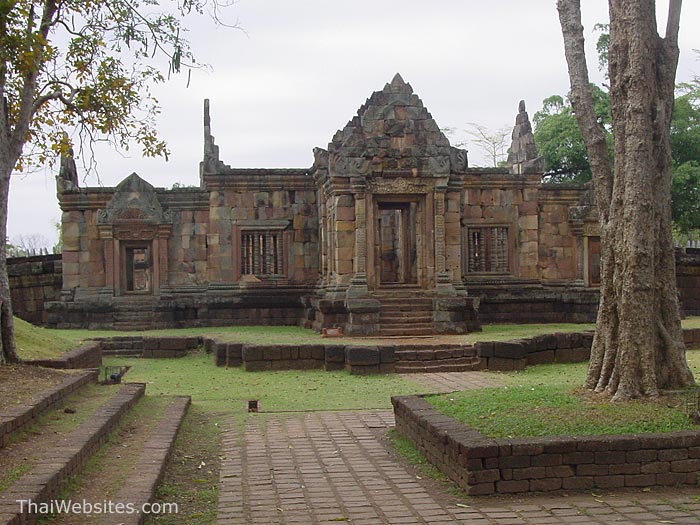
Muang Tam (Buriram Province). Muang Tam is located close to Prasat Hin Khao Phanom Rung. Muang Tam dates to the late 10th century A.D. (King Jayavarman V)
Jayavarman VII reasserted the Khmer and carried out many building projects. After Jayavarman VII the Khmer Empire entered into decline. The Thai Kingdom of Sukhothai managed to repel the Khmer. The Empire was threatened by the Mongols (but not annexed) under Kublai Khan in 1283.
The Thais became the persistent enemy of the Khmer in the following few centuries. The Kingdom of Ayutthaya conquered Angkor in 1431. Thereafter the center of the remaining Khmer Kingdom moved south to present day Phnom Penh.
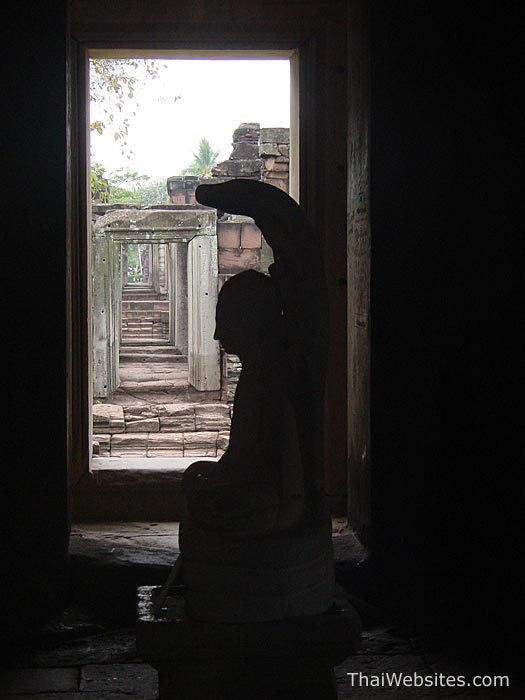
Buddha (with Naga) at Prasat Hin Phimai (Nakhon Ratchasima Province). Prasat Hin Phimai was built around the turn of the first millenium, mainly by King Jayavarman V and King Suriyavarman I.
Since the Khmer reigned for long periods over extended areas of present day Thailand, Thailand has a substantial number of important Khmer monuments on its territory, mainly in its Northeastern Region (such as Phonom Rung and Muang Tam in Buriram Province, Phimai in Nakhon Ratchasima province, Muang Singh in Kanchanaburi province). Any look around the old temples of Sukhothai, Lopburi and Ayutthaya will also reveal strong Khmer architectural influences.
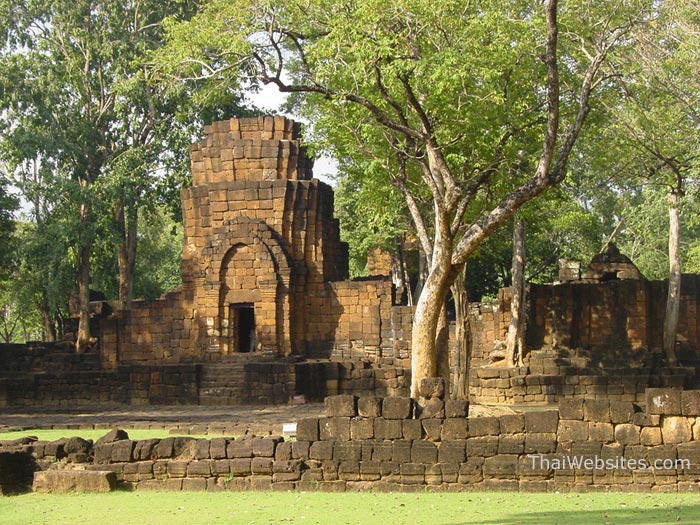
Prasat Muang Singh (Kanchanaburi). Prasat Muang Singh all to the west of present Thailand, was built under the reign of Jayavarman VII (1181-around 1220)
Source for Khmer History (modified and abbreviated) : Wikipedia

